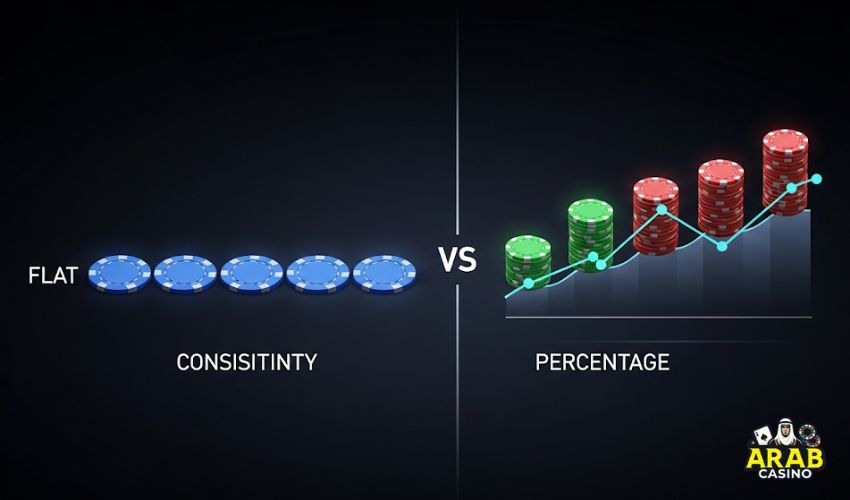Why a “Unit” Is Your Most Important Betting Tool
New bettors often fixate on picking winners. Experienced bettors focus on managing their money. The unit is the primary tool for this. It is a simple but powerful concept that shifts your perspective from chasing individual wins to building a long-term, sustainable strategy. Its main functions are:
- Risk Management: A unit system prevents you from betting on sports too much of your bankroll on a single game. It enforces a ceiling on potential losses, which is critical during a losing streak.
- Performance Measurement: Tracking your profit and loss in units rather than dollars gives you a true measure of your betting skill. A profit of +10 units is a success, regardless of whether your unit is $10 or $1,000.
- Emotional Discipline: This is the most underrated benefit. When you have a predetermined stake for every bet (e.g., one unit), you eliminate the temptation to bet big out of overconfidence or to chase losses after a bad beat. The decision is already made, turning a potentially emotional choice into a simple mechanical action.
How to Calculate Your Betting Unit in Two Simple Steps

Setting up your unit structure is straightforward. It requires an honest assessment of your finances and your tolerance for risk.
Step 1: Define Your Bankroll
Your betting bankroll is money set aside exclusively for wagering. This must be disposable income: money you can afford to lose without affecting your daily life. Never use funds meant for rent, bills, or savings.
Being honest with yourself here is critical. A person who sets aside a true $500 bankroll is in a much better position than someone who pretends their bankroll is $5,000 but is actually pulling from their checking account.
Step 2: Choose Your Percentage
The industry standard is to make one unit equal to 1%–3% of your bankroll. Your choice within this range depends on your goals and risk tolerance.
- 1% (Conservative): Ideal for beginners and risk-averse individuals. This approach can withstand long-losing streaks and promotes a slow, steady approach.
- 2% (Standard): A common middle ground for bettors with some experience. It offers a good balance between growing your bankroll and protecting it from variance.
- 3% (Aggressive): This level should only be used by experienced bettors with a proven record of success. While it accelerates gains, it also magnifies losses and can deplete a bankroll much faster during a downturn.
Here is how this looks with different bankroll sizes:
| Total Bankroll | 1% Unit (Conservative) | 2% Unit (Standard) | 3% Unit (Aggressive) |
| $250 | $2.50 | $5.00 | $7.50 |
| $500 | $5.00 | $10.00 | $15.00 |
| $1,000 | $10.00 | $20.00 | $30.00 |
| $5,000 | $50.00 | $100.00 | $150.00 |
Flat vs. Percentage Models: Which Is Better?

Once you calculate your unit size, you must decide how to apply it.
The Flat Model
You bet the same dollar amount per unit until you decide to reassess your entire bankroll. If your unit is $20, it stays $20 whether your bankroll goes up to $1,200 or down to $800.
- Pros: Very simple to track. Promotes perfect consistency.
- Cons: Your stake represents a larger portion of your bankroll during a losing streak, increasing risk. It does not compound winnings as effectively.
The Percentage Model
Your unit size adjusts with your bankroll. You recalculate your 1%–3% unit value after a set period, like every week or month. If your $1,000 bankroll grows to $1,200, your 2% unit increases from $20 to $24. If it drops to $800, your unit shrinks to $16.
- Pros: Automatically protect your bankroll during downturns. Compounds winnings faster during hot streaks.
- Cons: Requires more discipline and regular tracking.
For most bettors, starting with a flat model and reassessing your bankroll on a quarterly or yearly basis is a sound strategy.
The Biggest Mistake Bettors Make with Units
The most common failure is abandoning the plan. A bettor with a $20 unit might lose two bets in a row and feel the urge to “win it back” with a $60 (3 unit) wager on the next game. This is called chasing losses, and it is the fastest way to destroy a bankroll.
The unit plan is a shield designed specifically to stop this impulse. Each bet should be for your standard one unit, regardless of the previous outcome. Trust the system, not your gut feeling, in a moment of frustration.
A Final Perspective on a Unit in Betting
Thinking in units does more than just manage money; it professionalizes your mindset. It forces you to treat betting as a series of calculated, equal-risk investments rather than a series of disconnected gambles.
Success in sports betting is not defined by a single huge payout. It is defined by survival, discipline, and consistent, positive returns over thousands of wagers. Your unit is the tool that makes that possible. It is the line between disciplined speculation and reckless gambling. For support with responsible gaming, visit the National Council on Problem Gambling.





